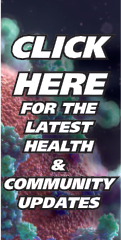 By: Patrick Troyer, Education Specialist Paulding SWCD
By: Patrick Troyer, Education Specialist Paulding SWCD
Due to the drastic decline in the population of the Monarch Butterfly, the Ohio Pollinator Habitat Initiative and the Paulding SWCD are seeking public involvement to collect and drop off common and swamp milkweed pods from established plants. Milkweed is known as a pollinator species which means it provides nectar or pollen for a variety of different species. Pollinator species such as the milkweed are suffering from a major population decline across Ohio as well as the United States.
In an effort to increase the monarch butterfly numbers, the Ohio Department of Natural Resources and other partners created the Ohio Pollinator Habitat Initiative following a petition in 2014 to designate the monarch as an endangered or threatened species. According to foragersharvest.com, the milkweed plant is one of the best known wild plants native to North America.
Many farmers see it as a pest in their fields while nature enthusiasts see it as a vital species to the monarch. Milkweed is commonly found on roadsides, fencerows, and along streams. It has large oval shaped leaves with veins that branch out from the center. The main distinguishing factor of milkweed is the white sticky sap that oozes out of the stem when cut. There will also be pink, purple, and white flowers on the plant when it is in bloom.
Milkweed pods will range in length between three to five inches, have an egg shaped appearance, and a hook-like tip. As part of this initiative, milkweed seed pods will be collected with hopes in provide more milkweed plants for the monarch to utilize for its habitat. This collection will run from September 1st until October 30th and everyone is highly encouraged to collect pods from mature plants and bring them to the collection point for Paulding County which will be the Paulding Soil & Water Conservation District. The collection barrel will be located on the front porch of the Black Swamp Nature Center located at 753 Fairground Drive Paulding, OH 45879.
The Ohio Pollinator Habitat Initiative reminds us of several things to keep in mind when collecting seed pods:
1. It is best to pick the pods when the seeds contained within them are brown. Do not collect them when they are white or cream colored as they are not matured. The pod is ready to be picked when the seam of the pod opens with gentle pressure.
2. As pods are collected be sure to wear appropriate clothing as well as disposable gloves.
3. Place collected pods in paper bags or grocery sacks. Do not use plastic bags as they attract moisture.
4. Keep seeds in a dry, cool area until you can bring them to the Paulding SWCD Office.
5. Collecting pods will not affect milkweed populations in areas where they are already established.
Seed pods that are collected as part of this project will be used to establish new plantings and create additional habitat for the Monarch butterfly throughout Ohio in the coming years. “Common and swamp milkweed is essential for the survival of Monarch Butterflies in Ohio,” said Marci Lininger, biologist with the US Fish & Wildlife Service. “Ohio is a priority area for Monarchs.
This generation of Monarchs are also responsible for starting the life cycle all over again in the spring, and laying the following year’s first generation of Monarchs in late summer,” The Paulding SWCD Office is only a collection point and any pods collected will then be passed along to the Ohio Pollinator Habitat Initiative. Keep an eye on our Facebook Page “Paulding Soil & Water Conservation District” for updates on this program as well as pictures of how to collect pods and spotting the milkweed plant.
Be sure to stop on by the Black Swamp Nature Center and drop off your milkweed pods! Feel free to call the Paulding SWCD at 419-399-4771 or email paulding@pauldingswcd.org should you have any questions.









